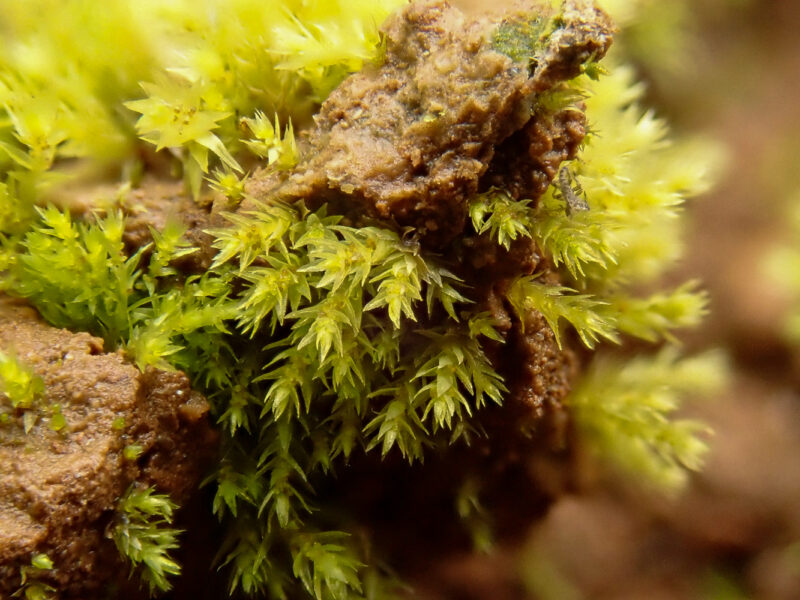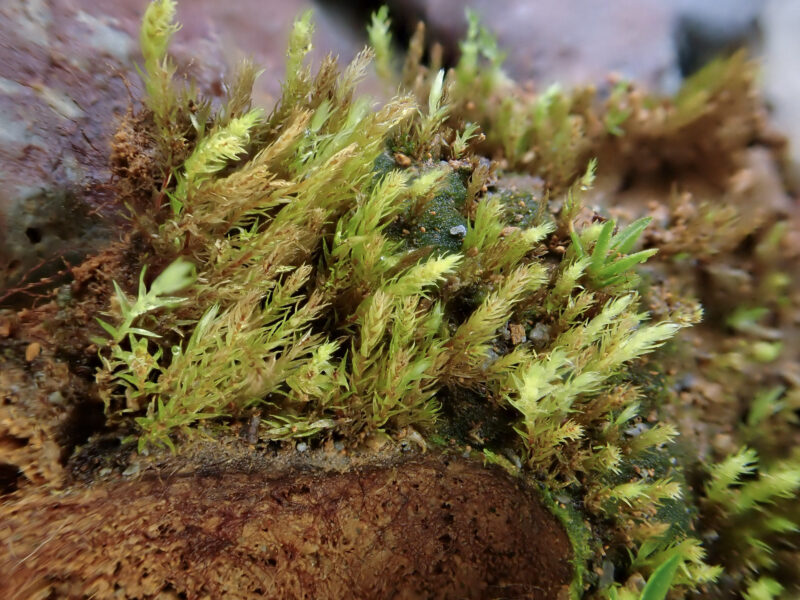Identification notes
Small bulbiferous Pohlia species can be confusing and until you get to know them well, it’s worth bearing in mind that you’re most likely to collect P. annotina, a highly variable species.
P. camptotrachela can be provisionally recognised in the field by its numerous very small, ovoid bulbils. After heavy rain, which knocks them off the plants, there may be fewer than 10 per leaf axil, but the size and shape of the bulbils is distinctive. Under the compound microscope, look at the leaf primordia – P. camptotrachela only has two or three per bulbil and they are unicellular, unlike closely related species. You’ll often also see a short, weak-looking bulbil stalk.
Leaves alone are not very helpful in identifying P. camptotrachela and other bulbiferous species of Pohlia, but fortunately, bulbil-bearing shoots can always be found if you look hard enough.













